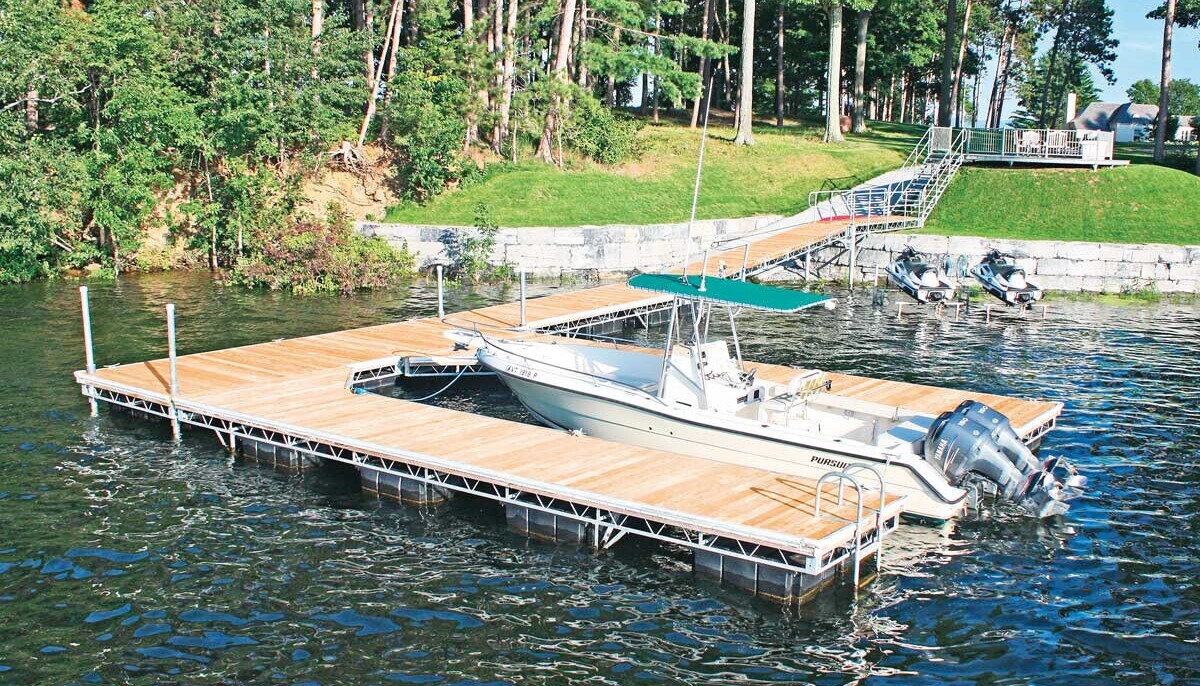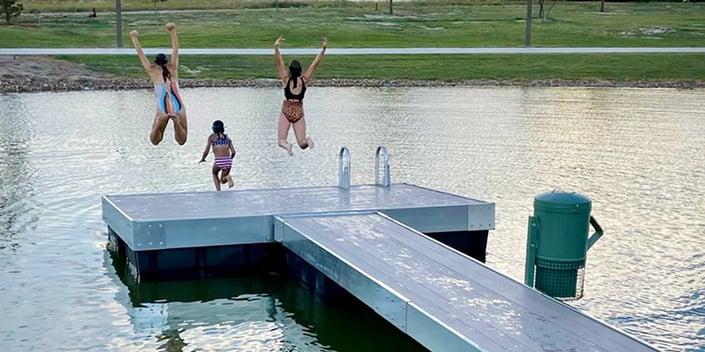Navigating the Options: Selecting the Right Dock Company for Your Floating Dock Project
Floating Docks: The Perfect Choice for Versatile Water Gain Access To
Floating docks present a compelling solution for a selection of water gain access to needs, offering versatility that goes beyond standard mooring choices. The modular nature of floating docks assists in personalization, catering to details demands.
Benefits of Floating Docks
Floating docks offer numerous benefits that improve water access for numerous applications. Their capability to rise and drop with transforming water levels makes them particularly useful in atmospheres with varying tides or seasonal variants. This adaptability makes certain that vessels can conveniently anchor without concern for the water's deepness, providing a trusted system for recreational, business, and industrial uses.
Furthermore, floating docks are frequently built from sturdy products that resist rust, making them ideal for long-term use in aquatic settings. Their installment is usually much less intrusive than traditional fixed docks, minimizing the ecological effect and helping with quicker release (floating dock services). This versatility enables simpler moving or reconfiguration according to customer demands or environmental changes
Security is one more key advantage; floating docks can offer steady gain access to for individuals disembarking or boarding from boats and reduce the risk of accidents connected with unsteady surfaces. Additionally, they can be developed to accommodate a variety of devices, such as fenders and cleats, boosting performance. Overall, floating docks represent an effective remedy for boosting water gain access to across varied markets while advertising security and ecological sustainability.

Sorts Of Floating Docks
Various kinds of floating docks accommodate various demands and environments, each made with specific functions to optimize capability. The most typical kinds consist of modular docks, which include interlacing areas that permit simple customization and development. These docks are optimal for entertainment use, as they can be tailored to fit different watercraft sizes and water conditions.
One more prominent alternative is the stationary floating dock, which stays secured in position but floats with altering water levels. floating docks. This type is especially fit for locations with marginal tidal variations, providing stable access for fishing or swimming. Furthermore, there are drive-on docks, which feature a sloped style that permits watercrafts to quickly drive on and off, making them suitable for individual watercraft and smaller sized vessels
For business applications, sturdy floating docks are readily available, created from strengthened materials to hold up against substantial lots and extreme aquatic atmospheres. Finally, green floating docks use sustainable materials and designs to minimize environmental impact, frequently incorporating features like vegetation to sustain neighborhood wild animals. Recognizing the numerous kinds of floating docks ensures that customers can pick one of the most proper service for their particular requirements.
Installation Process Summary
A successful installation of floating docks requires mindful planning and interest to information to ensure optimum efficiency and safety and security. The initial step involves examining the website problems, consisting of water deepness, present, and prospective obstacles. This analysis informs the selection of the ideal dock products and layout tailored to the particular environment.
Following, getting required authorizations is important, as many territories have policies regarding building on water bodies. The setup can continue once additional resources permissions are safeguarded. Begin by preparing the structure, which may include anchoring systems or pilings customized to the dock type and regional problems.
Following the foundation arrangement, assemble the dock sections according to maker specifications. Make sure that all elements are securely attached and lined up to hold up against environmental stress and anxieties. Position the dock in the assigned area, ensuring it is degree and stable.

Upkeep Tips and Ideal Practices
After the installment procedure is total, ongoing maintenance plays a vital duty in making certain the long life and performance of floating docks. Normal assessments ought to be conducted to recognize any kind of indications of wear, deterioration, or damages - floating dock builder. Look for any type of loose installations, cracks, or splitting up in the dock sections, as these can endanger structural integrity
Cleaning up the dock is vital to remove particles, algae, and other accumulation that can affect its look and safety. Use a gentle stress wash occasionally to maintain tidiness without causing damages to the surface. Furthermore, using a safety sealer every few years can aid enhance durability and resist environmental wear.
Take notice of the mooring lines and supports, guaranteeing they are complimentary and protected from deterioration. Replace any type of abject components immediately to stay clear of risks. Seasonal modifications might also be needed; throughout severe weather, rearranging or reinforcing the dock can protect against damage.
Applications for Floating Docks
Floating docks offer a plethora of applications, catering to both business and recreational needs. In leisure setups, they give seamless access to waterways for tasks such as boating, angling, and swimming. Their flexible nature enables installation in differing water degrees, making certain safe and stable gain access to no matter tidal variations.
Readily, why not try this out floating docks are essential for marinas and beachfront businesses. They promote the docking of vessels, allowing effective filling and dumping of products. Their modular style enables for simple development or reconfiguration to accommodate changing company demands, making them perfect for boat rentals, tour procedures, or angling charters.
Furthermore, floating docks are utilized in ecological applications such as marine research study and habitat remediation. They can act as platforms for clinical research studies, keeping an eye on water high quality, or carrying out wildlife studies without troubling sensitive ecosystems.
In commercial contexts, floating docks are used in building and construction jobs, offering access to hard-to-reach locations for devices and personnel. Their convenience, durability, and marginal effect on the atmosphere make them an optimal selection for a large range of applications, improving both functionality and accessibility in various water-based atmospheres.
Conclusion
In final thought, floating docks stand for an optimum solution for diverse water access needs, owing to their versatility, durability, and modular design. Floating docks serve as a useful possession for recreational, business, and environmental tasks, making certain dependable access to rivers and promoting sustainable methods in water atmospheres.
Floating docks present a compelling option for a selection of water gain access to needs, providing versatility that goes beyond typical mooring choices.Floating docks offer various advantages that enhance water access for various applications. In general, floating docks stand for a reliable option for enhancing water gain access to across diverse sectors while advertising safety and security and ecological sustainability.
One more prominent option is the stationary floating dock, which stays anchored in place but floats with changing water degrees.In final thought, floating docks represent an optimal remedy for view publisher site varied water gain access to needs, owing to their versatility, toughness, and modular style.